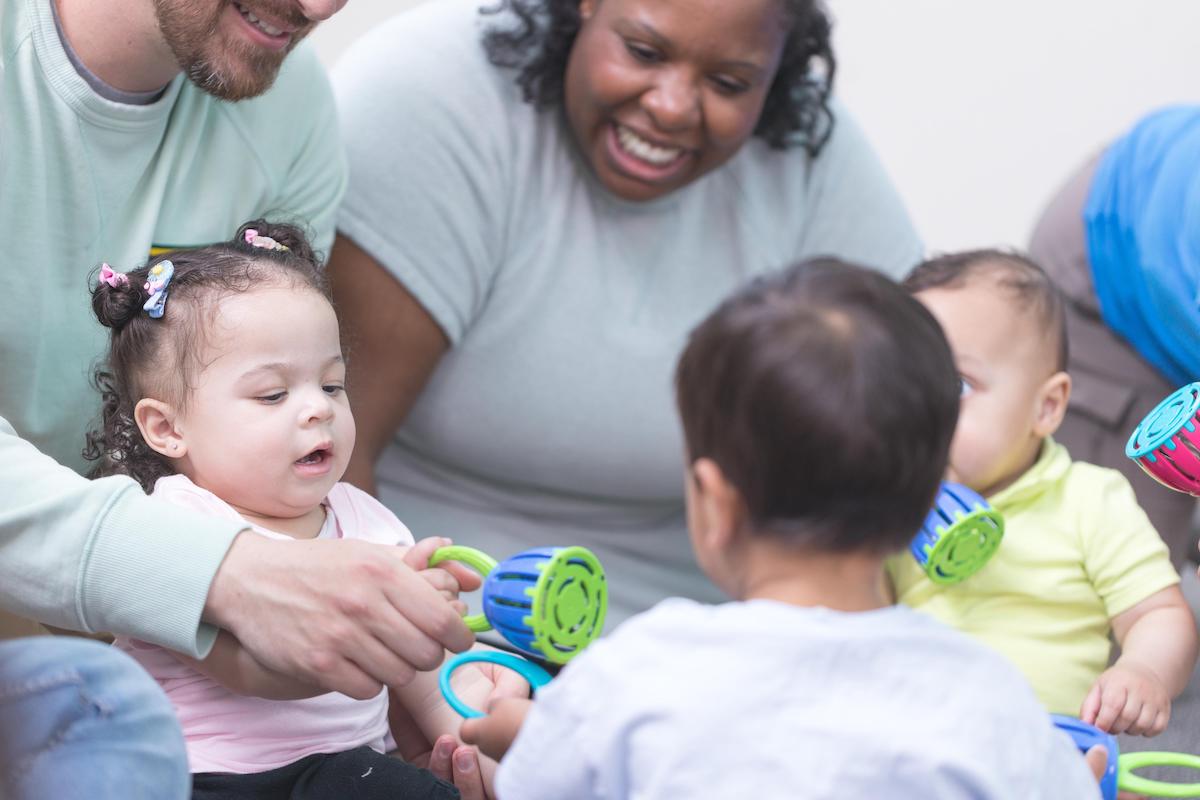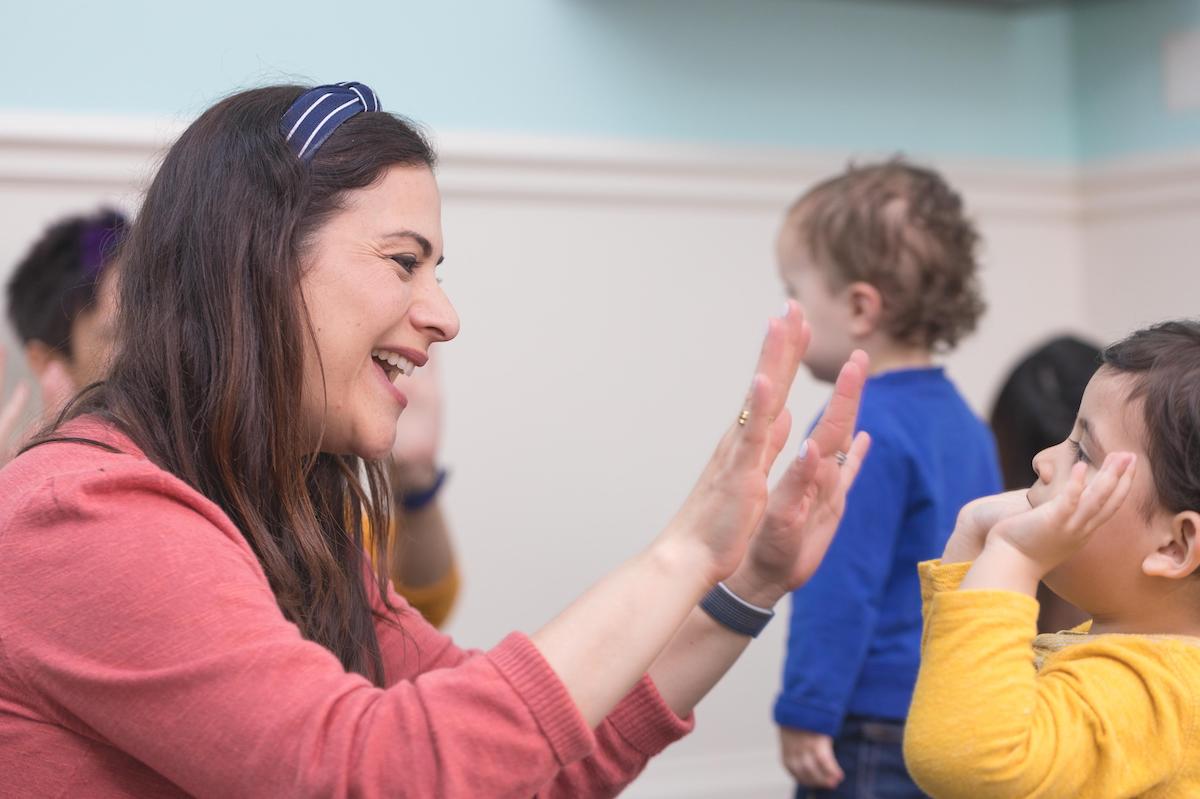Music—whether you’re listening to it or playing it—has loads of benefits, but shared musical play (the act of making and reacting to music with another person) takes those benefits to the next level. Shared musical play is the ultimate multi-sensory experience that boosts cognitive, whole body, and social-emotional development, and supports critical grownup/child connection…all through PLAY!
There’s research to prove why practicing shared musical play at home is absolutely essential to positive growth and family engagement during the early years.
So, what exactly does it say and how can you replicate it?
Years of study in Australia led by Professor Margaret Barrett at the University of Australia, Queensland, specifically looked at shared music-making between caregivers and children over time.
“…[I]nformal encounters with music at home are critical for young children’s development – with benefits above and beyond those of shared reading. And quite beautifully, the best results are seen when music making is a shared experience between parent and child.”
Data drawn from 3,100 families who participated in the study led the team to this conclusion: “shared music-making at the age of 2–3 years correlates positively with increased school readiness, pro-social skills, and literacy and numeracy outcomes at age 4–5.”
But what kinds of interactions are we talking about?

What Does Shared Musical Play Look Like?
The research team included many examples of the types of musical activities families did together which are all perfect at-home engagement ideas.
- Make Up Simple Songs: Caregivers and children made up simple songs to sing together during routines, such as bath time or mealtime.
- Talk In Tune: Parents put simple tunes to the words they used to describe what they were doing with children while doing those things—whether it was building with blocks, walking in nature, or dressing to go somewhere. So, rather than simply commenting on how good the warm sun feels, parents might sing about it to a familiar tune like “Twinkle, Twinkle Little Star”: Shiny, shiny sun so high, shiny, shiny in the sky. Thanks for warming us today. You make it nice for us to play. Shiny, shiny sun so high, shiny, shiny in the sky.
- Make Time for Dance Parties: Parents and children made up movements and danced together while listening to music.
- Create Homemade Instruments: Parents and children figured out how to make instruments like rattles and drums using things around the house, then played them together.
One particularly interesting finding stemmed from the fact that the research team was careful to include parents who ranged from “not at all musical” to “play a musical instrument” in the study. Regardless of the grownup’s musical background or comfort with making music, the shared musical experiences with their children had positive outcomes.
So, don’t let any discomfort you might have get in the way of enjoying musical experiences with your child! Music brings joy, and joy makes the learning and connection stick. Period.
Want some additional guidance and tools to help foster shared musical play? Find a Kindermusik class near you or check out our classroom kits for teachers.


Dear Kindermusik,
It was interesting to read this article. Many of my families were part of this study for two years. Professor Barratt and her colleague, Vicky visited on several occasions to witness the families in action in class and to interview them as well. Margaret also interviewed a variety of families who were no longer in my Kindermusik classes, however had their children complete the full program. I think this was during the years 2015 & 2016.